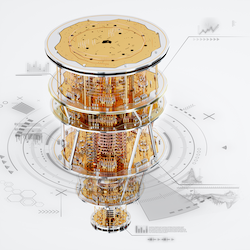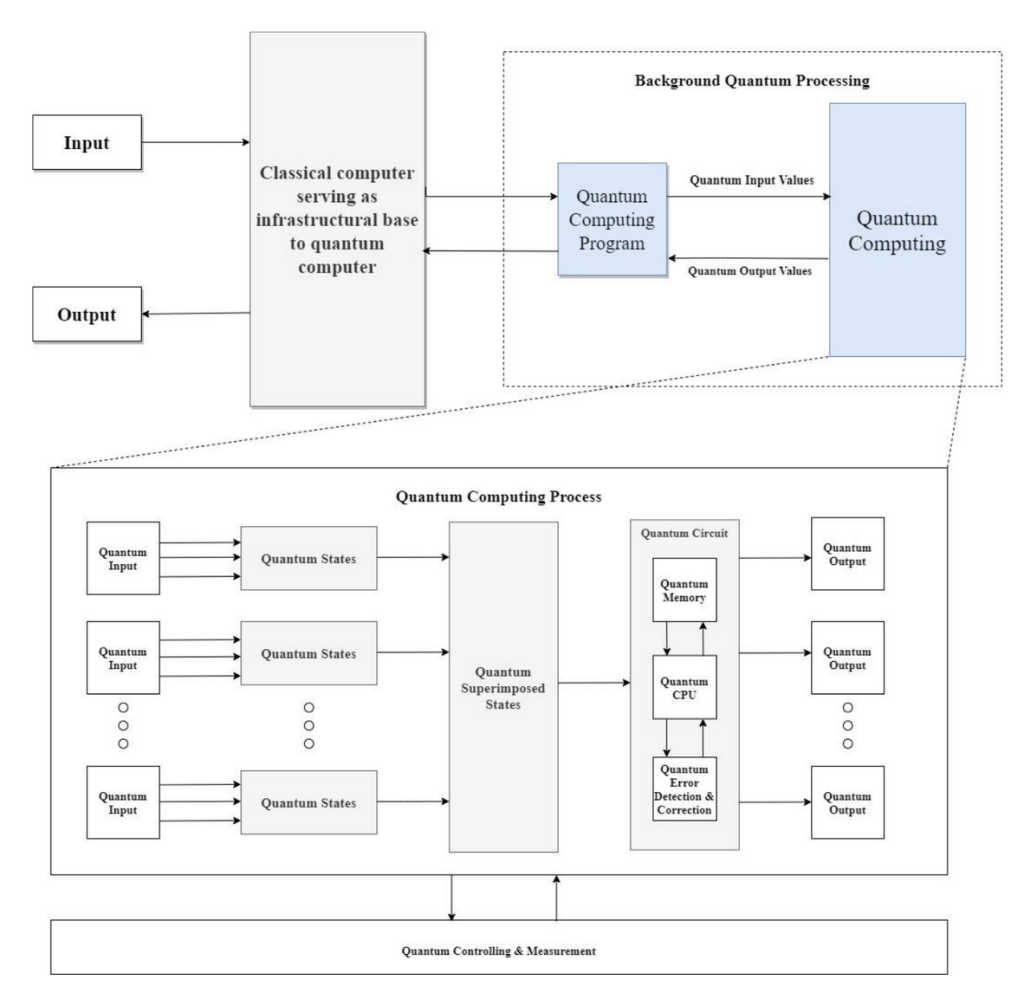
Since its conception in the 1980s, quantum computing (QC) has presented academia and industry with numerous challenges as the technology has scaled. While QC systems have grown exponentially, with qubit numbers per system increasing from single digits to more than a thousand, a byproduct of this growth is a fragmented software and hardware ecosystem that makes further progress more difficult. Researchers have recently addressed this issue by creating a unified software and hardware platform to simplify quantum development and make advances more attainable.
Hybrid Architecture
By providing researchers and developers with more computational power than classical high-performance computing (HPC) systems, QC has the potential to enable significant advancements in many scientific fields. Recognizing this, 71% of HPC centers globally plan to deploy some form of QC by 2026. Despite these incentives and tremendous investment, QC scaling still faces engineering challenges. Qubits — the fundamental computational units of a QC system — require extensive noise isolation and error correction, particularly as qubit counts increase. Though algorithmic and physical approaches to error correction and reduction have increased reliability, the prevailing paradigm of “noisy intermediate-scale quantum” (NISQ) accepts that errors are inevitable and should be controlled through algorithms driven by a classical-quantum computing hybrid architecture.
While recent chips such as Microsoft’s Majorana One and Google’s Willow are purported to achieve significant error reductions through physical design, QC systems incorporating them will require some means of error correction. Therefore, a hybrid NISQ approach will likely remain relevant even with the emergence of new quantum chip technologies. Though effective, this hybrid architecture creates overhead and requires multiple platforms to interface simultaneously, which has led to the proliferation of specialized hardware and software.

Figure: The relationship between classical HPC and QC architectures.
Simplifying A Complex Toolchain
Within a hybrid system, quantum control processors are classical chips that facilitate error correction and direct modulation of qubits, acting as an intermediary between quantum and classical systems. Software in the field is incredibly diverse with no fewer than 55 quantum toolkits for simulation and/or implementation and 22 external open-source software libraries (as of 2021). Qubit physical modalities are also numerous and come in both solid state (e.g. superconducting, silicon, topological) and non-solid state (e.g. trapped ion, photonic, neutral atom) varieties, each with their own control schemes. Traditionally, researchers have written custom binary instructions for quantum control processors unique to these modalities. This specificity means that developing supercomputing centers and advancing the field requires deep investment into highly specific workflows that may not scale in the long run.
To reduce this complexity, researchers have introduced a “unified quantum platform” that incorporates both hardware and software standardization to simplify HPC-QC. Such standardization affords interoperability across quantum systems and promotes compatibility with multiple physical modalities. The proposed unified quantum platform consists of the following components:
Software layer
- Unified quantum intermediate representation:
Adoption of the Quantum Intermediate Representation (QIR) standard already maintained by the QIR alliance with the incorporation of emerging instruction sets as developed by hardware vendors and software developers. QIR bridges the gap between high-level languages and low-level quantum execution targets.
- Unified runtime library:
A runtime library that maps QIR base profile representations to an instruction set architecture supported by a novel quantum control processor. This library implements the binary instructions corresponding with the QIR representation and coordinates memory for quantum and classical registers along with other important functions. As with QIR, the unified runtime library will receive updates to support emerging quantum platforms.
Interface layer
- Software-hardware interface:
A shared memory segment that transfers the runtime system’s binary instructions to the novel quantum control processor for hardware execution.
- A quantum instruction set architecture:
An existing superconducting qubit control scheme modified by adding instructions for other physical modalities. The result is unified qubit addressing and gate control with platform-specific waveform parameters and additional instructions specific to certain modalities, such as neutral atom platforms.
Hardware layer
- Novel quantum control processor:
A single control processor capable of loading and executing configuration files for any qubit modality.
- Heterogeneous accelerators:
A technology-specific accelerator block activated when a particular modality is selected. This allows the quantum controller to switch between different physical modalities using the same components.
The unified quantum platform is a singular workflow that can load and deploy a variety of waveforms and specific control measures using the same toolchain, abstracting away the complexity of the current ecosystem. Benchmarking of the system was favorable: Memory utilization and execution time scaled super-linearly with qubit number and could be directly estimated. This predictability enables resource planning for system architects and developers.
A unified platform is an important step toward realizing general quantum advantage as HPC centers move to incorporate quantum systems. Such deployments enable gains in specific scientific domains and may contribute to the advancement of quantum computing itself, paving the way for more capable systems.

References
Bharti, K., Cervera-Lierta, A., Kyaw, T. H., Haug, T., Alperin-Lea, S., Anand, A., Degroote, M., Heimonen, H., Kottmann, J. S., Menke, T., Mok, W.-K., Sim, S., Kwek, L.-C., & Aspuru-Guzik, A. (2022). Noisy intermediate-scale quantum algorithms. Reviews of Modern Physics, 94(1), 015004. https://doi.org/10.1103/RevModPhys.94.015004
Cacheiro, J., Sánchez, Á. C., Rundle, R., Long, G. B., Dold, G., Friel, J., & Gómez, A. (2025). QMIO: A tightly integrated hybrid HPCQC system. arXiv preprint arXiv:2505.19267. https://doi.org/10.48550/arXiv.2505.19267
Elsharkawy, A., Guo, X., & Schulz, M. (2024). Integration of quantum accelerators into HPC: Toward a unified quantum platform. arXiv preprint arXiv:2407.18527. https://www.computer.org/csdl/proceedings-article/qce/2024/413701a774/23oq5CvRekE
Gill, S. S., Kumar, A., Singh, M., Kaur, K., & Buyya, R. (2020). Quantum computing: A taxonomy, systematic review and future directions. arXiv preprint arXiv:2010.15559. https://arxiv.org/abs/2010.15559
Google Quantum AI and Collaborators. (2025). Quantum error correction below the surface code threshold. Nature, 638, 920–926. https://doi.org/10.1038/s41586-024-08449-y
IBM. (2023). IBM Quantum System Two: the era of quantum utility is here. IBM Quantum Computing Blog. https://www.ibm.com/quantum/blog/quantum-roadmap-2033
Microsoft Azure Quantum, Aghaee, M., Alcaraz Ramirez, A., & others. (2025). Interferometric single-shot parity measurement in InAs–Al hybrid devices. Nature, 638, 651–655. https://doi.org/10.1038/s41586-024-08445-2
Disclaimer: The author is completely responsible for the content of this article. The opinions expressed are their own and do not represent IEEE’s position nor that of the Computer Society nor its Leadership.